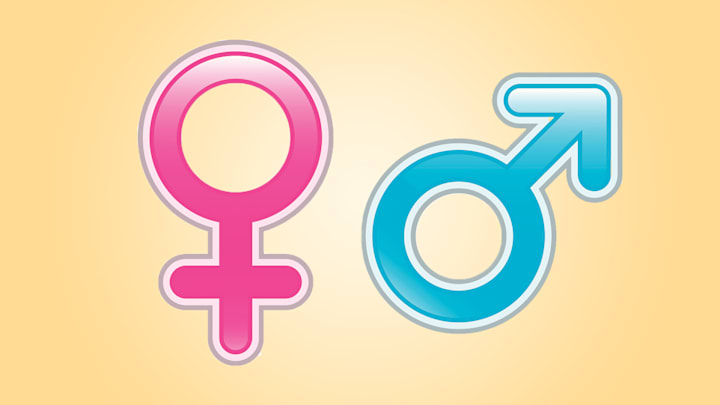If you’ve ever navigated your way through a set of public restrooms, chances are you’ve been confronted with these glyphs: ♀ for female, ♂ for male.
Interestingly, these circle-like shapes have travelled through a 2000-year journey filled with mythology, astronomy, and even some music notation to get to where they are today.
Out-Of-This-World Inspiration
The earliest versions of the male and female symbols weren’t about people at all, but instead about the planets. Ancient Babylonians linked celestial bodies with gods: Mars with the war god Nergal, Venus with the fertility goddess Ishtar. The Greeks adopted the idea; they gave Mars the name Thouros and Venus Phosphoros. Each planet also got a corresponding metal—iron for Mars (tough) and copper for Venus (soft).

Over time, scholars developed shorthand marks for these planets and metals. The symbol ♂ came from an abbreviation of the Greek name for Mars; the symbol ♀ from the name for Venus.

In the 18th century, Swedish botanist Carl Linnaeus gave these symbols a new meaning. He used ♂ and ♀ in plant classification, using Mars for the male parent, and Venus for the female. He did this simply because it saved him space in his notes. Other scientists followed suit, and the symbols hopped from botany to zoology to human biology.
The Shape Shift
By the mid-1800s, another set of sex symbols entered the scene. In 1845, New York physician Pliny Earle made his own tweaks while mapping out a family tree of people with color blindness. He used triangles and squares for males and circles for females instead of the classic ♂ and ♀.
You Might Also Like ...
• What’s the Difference Between Sex and Gender?
• How Bathroom Stick-Figures Became Universal Symbols
• The First Known Uses of 6 Common Typographic Symbols
It’s believed Earle did this because the printing press didn’t have the Mars and Venus symbols in its type set. According to one colleague, the physician borrowed shapes from music notation; the circles looked suspiciously like whole notes.
American geneticists adopted the new style. Squares, triangles, and circles were cleaner, easier to reproduce, and better for marking different genetic traits. By the early 20th century, they had replaced the classical symbols in most scientific pedigrees.
New Symbols Exist Beyond the Binary
While ♂ and ♀ remain the most widely recognized sex and gender symbols, the 20th and 21st centuries have seen a burst of new designs reflecting a broader understanding of gender and sexuality:
Symbol | Meaning |
|---|---|
♂ | Male |
♀ | Female |
⚧ | Transgender |
⚥ | Intersex |
⚢ | Lesbian |
⚣ | Gay |
These seemingly simple symbols carry a surprising amount of history in their small forms. So the next time you see ♂, ♀, or any of the newer variants, remember: you’re not just looking at a gender or sex marker. You’re looking at the condensed history of human curiosity.
Discover More Fascinating Origin Stories:
